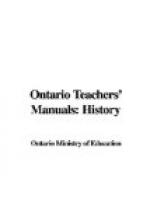Suppose this road to be converted into a good stone road at a cost of $3,000 a mile, a total cost of $30,000. On this road, with the larger and heavier wagons that could now be used, the farmers could easily double the size of the load. This would mean that, instead of 3,000 loads being necessary, 1,500 would be sufficient. At the same rate as before, the cost of haulage would be $3,750, an annual saving of $3,750; so that the whole cost of the road would be saved in eight years, to say nothing of the greater ease and comfort of travel to both man and beast. Better roads would also give the farmer access to market for a greater part of the year and thus enable him to take advantage of higher prices at certain seasons. It is believed that these figures are quite within the bounds of probability.
In large towns and cities the cost of public utilities may be calculated; for example, the expense of a fire-station in buildings, equipment, horses, men, etc., to show how the money raised by taxes is spent for the good of the whole community, and helps to keep down the rates for fire insurance. The kinds of taxation may also be discussed—direct and indirect; also the sources from which direct taxes are derived—customs, excise, etc.; methods of levying and collecting taxes; how taxes are spent for the various educational and charitable institutions—schools, libraries, hospitals, asylums, homes for the poor and neglected, etc.; for the protection of life and property; for the administration of justice, etc. The distribution of taxes among public institutions may be studied from the public accounts printed for the use of ratepayers.
The lessons learned about the fairness of taxation may be used to illustrate certain periods of history when people struggled against unjust and arbitrary taxation; for example, Wat Tyler’s Rebellion, the Civil War in England in the seventeenth century, the American and French Revolutions, Acts of Parliament in Canada from the Quebec Act to the Act of Confederation.
A Dominion or Provincial election offers a good opportunity for a lesson on how to vote and how we came to have the right to vote; on the constitution of Parliament; on the sanctity of the ballot, etc.
A trial by jury in which the people of the district are interested may be used to introduce the history and purpose of the jury.
THE TEACHER OF HISTORY
The teacher of history must know his subject. This does not mean that every school teacher must have an expert knowledge of the whole subject, but he should know the history that is to be taught thoroughly enough to be able to teach the lesson orally without referring constantly to the text-book or to notes. This, at least, is the ideal to strive for. To accomplish this, the teacher is earnestly recommended to read at least one book in addition to the authorized




